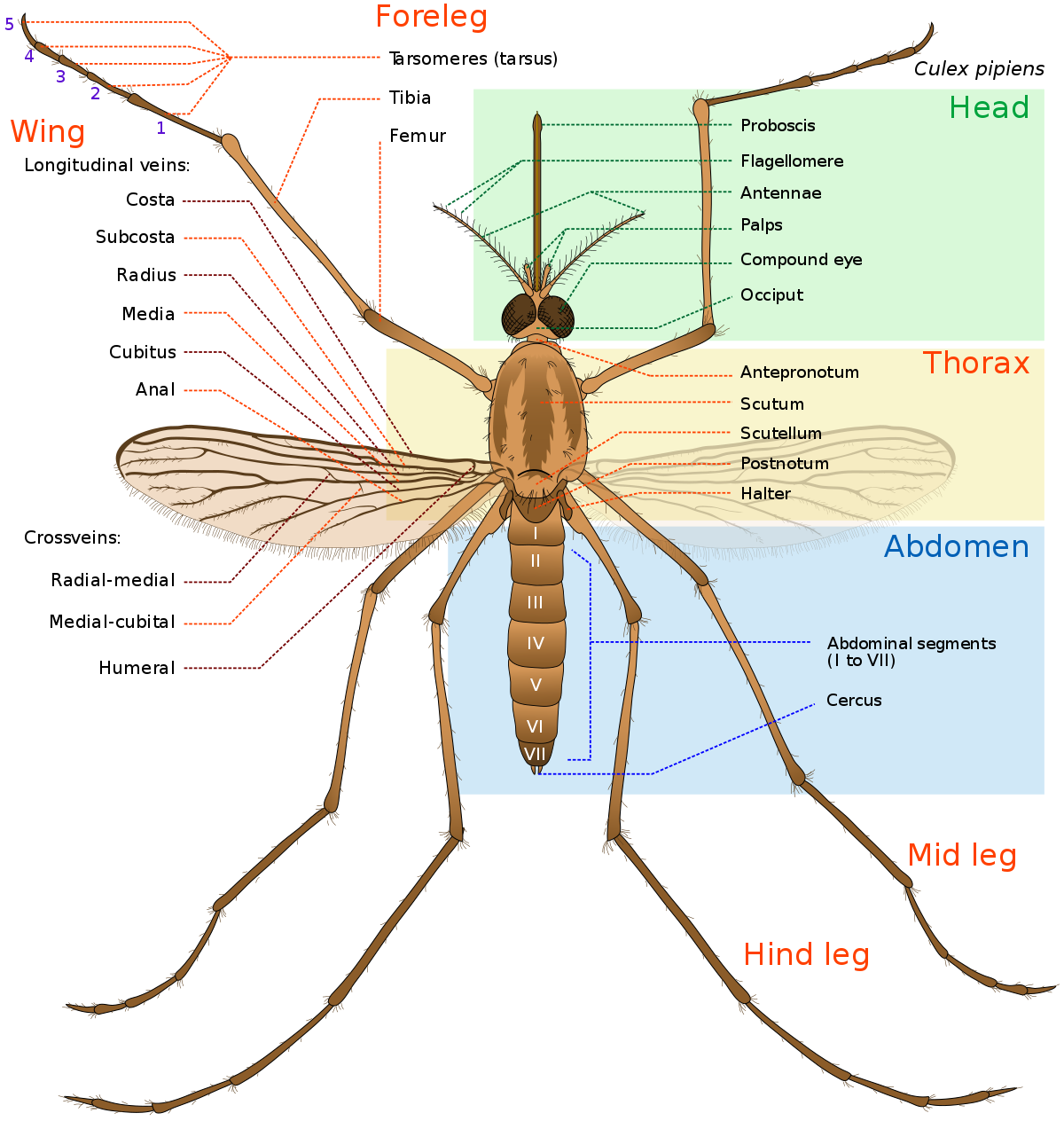Like all true insects, mosquitoes have three main body parts: head, chest, and abdomen. The head is the center of the mosquito's senses, where the compound eyes and antennae are located, and is also the tengu used for feeding. The chest is made up of three segments, each with a pair of legs. Like all insects, mosquitoes have three main parts: the head, chest, and abdomen. There are more than 2,000 lenses in the cockroach's eyes. Group or classify food. Digestive system: The gastrointestinal tract of mosquitoes is the tube that runs the entire length of the body and has various parts and glands that allow insects to digest food. In mosquito anatomy, these parts, unlike other insects, have glands that produce material that prevents blood from coagulating during feeding. When the temperature peaks, these insects are generally cool and rest outside. -Road location. Mosquitoes fly at about 1-1.5 mph. It is not uncommon for them to travel 10 to 15 miles at night. Mosquitoes weigh 1 ounce / 25,000. The average mosquito life is less than 2 months. A pair of wings, a pair of reticulums, and small wing-like organs used for steering germinate from the chest. The legs also protrude from the chest, with a total of six, each with small claws on each end to help mosquitoes stay attached to the surface.
General mosquito anatomy Mosquito anatomy is the same as most people. Insects in the world. There are three body segments: head, chest, and abdomen. Like many other insects, they have wings, three pairs of legs, and a mouthpiece.
What is the body part of the mosquito?
Like all insects, mosquitoes have three main parts: the head, chest, and abdomen. Do you have mosquito eyes? Yes, they do. The mosquito's head has sensory organs such as the brain, two compound eyes covered with a small lens called "Omachidia", and the photosensitive eyes (Oseri) that detect changes in light.
What is the mosquito digestive system?
Digestive system: The gastrointestinal tract of mosquitoes is the tube that runs the entire length of the body and has various parts and glands that allow insects to digest food. In mosquito anatomy, these parts, unlike other insects, have glands that produce material that prevents blood from coagulating during lactation in females.
How much does a mosquito weigh?
Mosquitoes vary in length, with most of these insects averaging about 5-6 mm in length. Like other insects, the mosquito's body is divided into three main parts: the head, chest, and abdomen. A typical mosquito weighs about 3 milligrams.
What is the function of mosquito feathers?
A pair of wings, a pair of reticulums, and small wing-like organs used for steering germinate from the chest. The legs also stick out of the chest, with a total of six, with small claws on each end to help the mosquitoes stay attached to the surface. the abdomen hangs from the chest and functions as the stomach and lungs of the mosquito.
What is the body of a mosquito made of?
The slender and elongated body of an adult is covered with scales, similar to the veins of its wings. Mosquitoes also feature long, fragile legs and elongated, stinging mouths. Male feather-like antennae are generally more bushy than female antennae.
What is the purpose of mosquitoes in the ecosystem?
Mosquitoes are ecosystems, although they may seem meaningless and purely stimulating to us humans. Mosquitoes form an important source of biomass in the food chain and serve as food for fish as larvae and birds, bats and frogs as adult flies. Some species are important pollinators.
What are mosquitoes in biology?
Mosquitoes are members of a small group of about 3,600 species of flies within the family Culexidae (from culex, which means "gnat" in Latin). The word "mosquitoes" (formed by mosquitoes and petite-ito) means "small flies" in Spanish and Portuguese. .. The mosquito life cycle consists of eggs, larvae, pupae, and adults.
What is a mosquito snout?
Scientists are Tengu (Pro BOSS-I discovered that the mouth of a mosquito called iss) is not just a small spear. It is a sophisticated system of fine needles, each piercing the skin, finding blood vessels and making it easier for mosquitoes to draw blood from them.

Below you will find two helpful answers on a similar topic. 👇
What are the 6 parts of an insect?Do chimpanzees use sounds?
